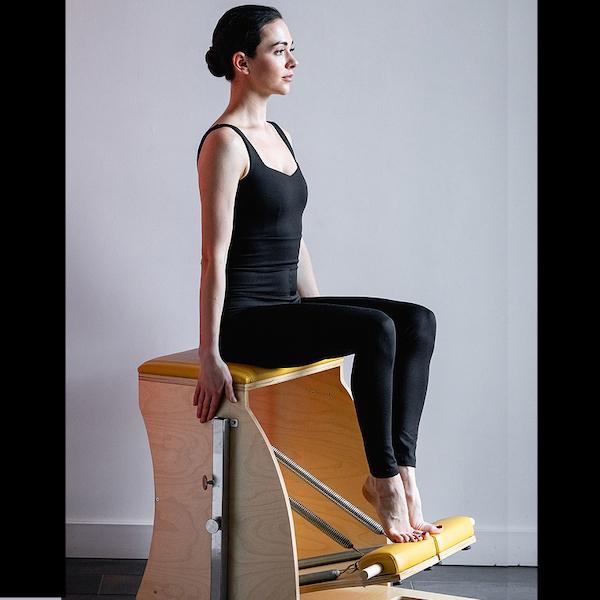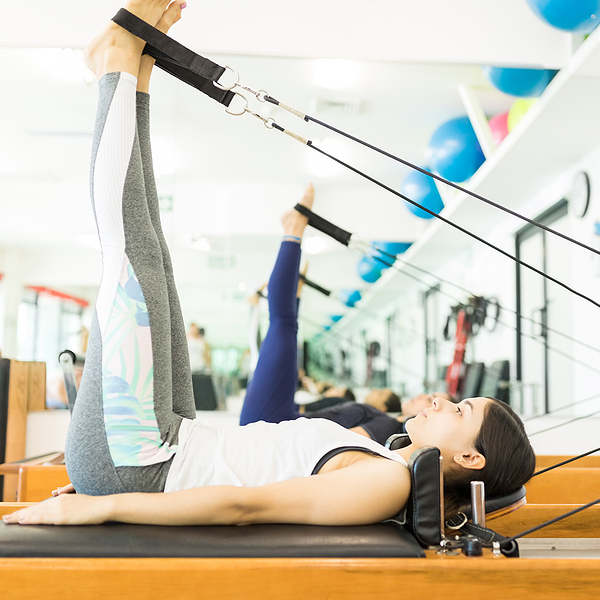AN ACTIVE SOLEUS TO COUNTER DIABETES
Pilates has a series of exercises on the reformer, called the Footwork, to improve ankle movement and flexibility. The Footwork is a good beginner’s exercise for weight loss. Are ankle muscles which constitute a fraction of the body’s total weight worth training? Yes, according to new research from the United States. Ankle movement may be one the best activities for metabolic health.
In 2022, research scientists from the University of Houston in Texas discovered the soleus muscle — an ankle muscle — could play a vital role in lowering blood glucose and lipid levels in the body. The breakthrough study suggests you don’t have to be fit to burn sugar and fatty acids from the body. The soleus muscle when it is active could sustain high levels of oxidative metabolism, comparable to walking or running.
Harnessing the soleus muscle could help in the fight against type II diabetes. In Singapore, one in three individuals is at risk of developing diabetes in their lifetime, according to data from the Ministry of Health. If the rate continues unabated, MOH estimates about one million Singaporeans would be living with diabetes by 2050.
SOLEUS, DESIGNED FOR LONG ACTIVITIES
Although just 1% of the body’s total weight, the soleus muscle is designed for prolonged activities. Some 88% of the soleus’ muscle mass is type 1 slow-twitch fibres, which is more than any other muscles observed in the body, according to the study published in iScience.
There are two main types of muscle fibres in the body: type 1 slow-twitch muscle fibres, which the soleus muscle belongs to, and type 2 fast-twitch fibres. Type 1 slow-twitch fibres are best for long-distance running and other endurance sports. Their muscle fibres are rich in mitochondria and myoglobins which make them slow to fatigue. In contrast, type 2 fast-twitch fibres produce more power and speed, but fatigue easily. They are best for sprinting and high intensity workout which require a quick and short burst of energy.
An example of a type 2 fast-twitch muscle is the gastrocnemius, another ankle muscle like the soleus. The gastrocnemius is a smaller, more surface muscle than the soleus, which lies beneath the gastrocnemius. Collectively, the gastrocnemius and soleus muscles are known as the calf muscles. Both muscles are attached to the feet via the Achilles tendon.
SOLEUS PUSH UP
Soleus is made for endurance-like activities due to the high concentration of type 1 slow-twitch muscle fibres. How to create a “soleus-dominant” activity to keep the soleus going for hours without fatigue in order to increase metabolism? The research scientists created an activity, called “soleus push up” (SPU). Performed in a seated position, SPU involves raising and lowering the heels. The front of the feet stays on the ground and below the knees.
SPU is similar to heel raises except it is done seated rather than standing to slacken the gastrocnemius, one of the two calf muscles, which also raises the heels.
Some 25 volunteers from 24 to 53 years old participated in the study. The volunteers were typically sedentary. They were tasked to do continuous SPUs for 130 minutes and 270 mins while sitting. Their blood glucose and lipid levels were monitored and compared with days when they were sedentary.
Despite the duration of over two hours and four-and-half hours, respectively for each session, the volunteers responded well, according to the study. They did not report fatigue or other adverse responses from the prolonged activities such as cramps, joint pain or muscle soreness.
BURN GLUCOSE, LIPIDS FOR HOURS
The study found continuous SPUs resulted in an overall 52% improvement in blood glucose and 60% less insulin requirement over three hours after ingesting a glucose drink. Lipid metabolism in the fasting period between meals also doubled from the normal rate, which reduced the levels VLDL triglyceride (or bad cholesterol) in the body, according to the study.
The glucose and lipid metabolism was fuelled by high oxygen uptake. The ability to maintain high oxygen consumption is associated with fitness levels. A fit person can do an activity longer than an unfit person due to a better oxygen uptake. So what is impressive is the high oxygen consumption, achieved by targeting the soleus muscle, without the person being particularly fit.
According to the study, some 270 mins of SPU consumed an average of 197 mL/min/kg of oxygen, which was higher than running on the treadmill at 108 mL/min/kg during the last stage before exhaustion. The oxygen uptake was also much higher than walking at a moderate intensity of 3 metabolic equivalents (METS), which consumed 30 mL/min/kg of oxygen.
BETTER THAN MEDICINE
“We are unaware of any existing or promising pharmaceuticals that come close to raising and sustaining whole-body oxidative metabolism at this magnitude,” said lead researcher Marc Hamilton in a report by the University of Houston.
Doing SPUs could help unfit individuals achieve high levels of oxidative metabolism. SPUs could become a tool to counter type II diabetes and other age-related metabolic diseases, Hamilton said.
For relatively fit individuals, SPU could also be used to increase metabolism during sitting, according to the study. An average person sits for nine to 11 hours per day. Contrary to popular belief that muscles burn energy even at rest, inactive muscles of the low body used only about 1 – 2 mL/min/kg of oxygen, which is below the basal metabolic rate of about 3 – 3.5 mL/min/kg, the study showed citing current research.
For the healthy population, continuous SPUs can help offset the low levels of metabolism experienced during sitting. So for example, if you are stuck in a meeting, try some SPUs to keep your metabolism going.
NOT AS GOOD FOR WEIGHT LOSS
However, while targeting the soleus muscle provides a great boost to oxidative metabolism, it is not as effective for weight loss compared to walking or running. The total energy expenditure from switching on a singular muscle such as the soleus, which is only 1% of the body’s weight, is less than working a group of muscles. Activity which requires compound movement also burns more calories.
According to the study, doing SPUs burned about 1.5 Calories per min (or 91 Cal/h), compared to 4 Cal/min from walking at a moderate pace of 3 METS, and almost 12 Cal/min from running at maximum oxygen or VO2max. Does it mean no more long walks or run, and no more Pilates or other exercises? Unfortunately, no if your goal is to lose weight.
For more on how to do SPUs properly, watch the video by Dr. Marc Hamilton on YouTube.
PILATES or BARRE or GYM-PILATES
While doing seated SPUs is not exactly the same as Pilates Footwork, which includes heel raises with knee flexion and extension, the study highlights the importance of ankle movement. Ankle muscles are worth training. Some muscles such as the soleus muscle work at their best when the activity is low impact.
In recent years, there is a drive for exercises even for Pilates to be more cardiovascular and more strength based than before. An example is Barre, a popular aerobic workout inspired by Pilates and ballet. Barre also works the ankles like the Pilates Footwork, but the footwork is done standing. A dance bar replaces the Pilates reformer. In Barre, high number of repetitions and pluses take the ankle muscles to fatigue to create a high-intensity, low impact workout. Light weights or dumbbells are used with the exercises. Xtend Barre and Pilates Barre are variations of the Barre workout.
Similarly, as Pilates exercises are also offered in gyms and fitness centres, weights are sometimes used, along with the Pilates reformer, to increase strength. Gym-based Pilates is very similar to a gym workout. So which is best? Pilates, Barre or Gym-Pilates?
BENEFITS OF SLOW BURN, SPRINGS FOR ANKLES
The results of the study provide answers to the question. The study showed muscles such as the soleus, which is a slow-twitch muscle works at its best when the activity is of low intensity. A low intensity workout increases the metabolic benefit. In contrast, high intensity workout is better for fast-twitch muscles to improve power and strength. As such, the use of weights are useful to train fast-twitch muscles.
Additionally, ankle muscles have a spring-like quality. Exercises which improve the stretchy or elastic quality of the ankles are also better if you want to improve walking, running or cycling pace. The use of springs as resistance — a hallmark of Pilates exercises — is a good way to increase elasticity of the ankle muscles. Taking the ankle muscles to a slow burn, and the use of springs for resistance bring out the best in the ankles.
DOESN’T HAVE TO BE SWEATY TO BE GOOD
Transversus abominius (TA) — an important core muscle — is also a type 1 slow-twitch muscle like the soleus. While adding weights, and working the ankles in a standing position are generally good workouts, some muscles like the soleus and TA work even better when they are tasked with slow and controlled movement. Staying true to the Pilates exercise method may be the best to train ankle and TA muscles.
A good workout doesn’t always have to be sweaty to be good. Low impact exercises also have their benefits depending on the type of muscles you are training. Improve your ankle movement, get started. Try Pilates Footwork today.
Sign up for a trial
(65) 6996 4396 today or sign up below:
Start Today
Testimonials
You may also like

Pilates 1-to-1
You have specific goals you want to me. You often sprain your ankles or your calf muscles always feel tight after you exercise. Enjoy a core-intensive which improve your core and strengthen your ankles…

Pilates Group
Most people associate Pilates with mat exercises, but Pilates is also performed on the reformer and other equipment. What sets our group classes apart is you will have access to these Pilates equipment…

